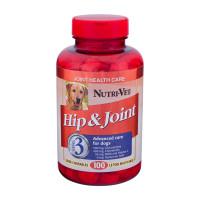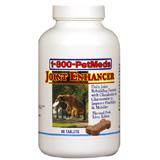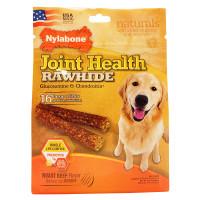
Dog hip dysplasia
Dog hip dysplasia is an ailment found in canines which causes the hip joints to form abnormally. A type of dog arthritis, this particular problem results in loose joints in the hip location making it extremely hard as well as distressing for the pet dog to move. Put simply, it is when the hips of a canine do not fit together correctly producing puppy joint pain.
Dog hip dysplasia influences all sort of dogs, although it’s even more common in pets of larger breed, and even more in purebred pet dogs. A few of the most very likely breeds getting hip dysplasia are great Danes, Rottweilers, Golden Retrievers, Labrador Retrievers, German Shepherds, St. Bernards and Mastiffs. Nonetheless slight hounds such as Grey hounds tend to evade this horrible ailment.

The ache a canine feels depends on the amount of separation in the joints. When there is partial dislocation of the thigh bone with the hip bone then this is known as subluxation, and it may even cause the dog to feel moderate or even no pain. Yet should the thigh bone is totally dislocated from the hip socket, it is called luxation, and this will induce excessive pain to the poor pet.
Causes
There really are a lot of variables that can easily cause a dog to acquire this condition.
1. Genetic makeup:
Dog hip dysplasia can be inherited genetically, especially in bigger breeds of dogs. At times, this particular condition even skips generations, but the chances are increased for a dog when the illness is in the immediate ancestry. Nevertheless genetic makeup is certainly not the only way, as it could also be developed as time pass because of environmental factors.
2. Excessive weight:
Weight problems in dogs has also been known to trigger this type of dog arthritis, as obese canines must carry more weight and this tends to wear out their hip joints. Obese dogs have the tendency to obtain more hip related injuries.
3. Calcium:
 Receiving excessive calcium is additionally a cause of the condition, since the extra calcium can cause the growing process to accelerate resulting in the bones not being able to develop correctly. Likewise insufficient calcium will likewise play a role in developing abnormal bones as well. In fact, over-exercising a canine at a youthful age can be a cause of dog hip dysplasia as well.
Receiving excessive calcium is additionally a cause of the condition, since the extra calcium can cause the growing process to accelerate resulting in the bones not being able to develop correctly. Likewise insufficient calcium will likewise play a role in developing abnormal bones as well. In fact, over-exercising a canine at a youthful age can be a cause of dog hip dysplasia as well.
Symptoms:
There are a few indicators that can show that a canine possesses dog hip dysplasia.
1. Problem Walking:
The major sign is if a dog experiences difficulty walking or seems to be limping in 1 or the two hind legs. Nevertheless both of the rear legs will definitely be influenced by this; however it might reveal a limp on the most compromised side. The distressing agony will not allow the pet to appreciate any of its normal activities like running, playing or even walking. It will also refrain from jumping or going up the steps, and will definitely experience trouble rising from lying or sitting down. There will additionally be pain in the rear/hip location.
2. Actual Changes:
 Another substantial sign is the bodily changes such as the losing of muscles in the hip region, or immature thigh muscles. The shoulder muscle will increase since the pet is going to place the extra weight in this area which its back legs will not have the ability to carry.
Another substantial sign is the bodily changes such as the losing of muscles in the hip region, or immature thigh muscles. The shoulder muscle will increase since the pet is going to place the extra weight in this area which its back legs will not have the ability to carry.
3. Hinder Legs Cow-Hocked:
If a youthful puppy is too slow to stand up on all fours, or climb up the steps or even leap, then this could certainly signify that it will definitely mature to get dog hip dysplasia. Yet another strong indication is if the back legs of a puppy are cow-hocked (quite similar to knock-kneed in humans).
Diagnosis:
X-ray are the major examinations for diagnosing this illness, however physical examinations are also vital. The physical will allow the veterinarian to manually check the dog’s hip plus the x-rays will show any indications of problems.
Therapy:
To treat dog hip dysplasia, a mix of therapy is utilized. This includes joint supplements for dogs, pain medicine, anti-inflammatory drugs, weight management, physical exercise and physical therapy. In more severe situations, hip replacement surgical treatment can also be an option.
Joint health supplement for pet dogs like Glucosamine ought to be given to the pet dog, since this anti-inflammatory component goes straight to the joints and serves to restore cartilage material. Exercise permits the weight of the canine to be managed, thereby minimizing the influence weight has on its hind legs.
Prevention:
In case the breed of the canine is such that it is vulnerable to develop dog hip dysplasia then strategies must be taken to lessen the disease’s influence, even though complete avoidance could be tough. The canine must undergo adequate physical activity in order to maintain a healthy weight as well as develop the muscles properly so that there is less impact on its joints.
Attention needs to be taken to nourish the dog properly so that its diet plan does not miss something it requires and a perfect weight is maintained. Dogs should be supplied joint health supplement with calcium and phosphorus to ensure that they develop healthy bones; also glucosamine supplements in order to mend any damage that might create hip dysplasia or hip arthritis.
Refrain from breeding canines with this affliction to minimize it. The dog has to be kept comfortable, as cold weather has the tendency to enhance joint pains. Massage therapy can additionally play a role in helping the canine relax its stiff muscles.
For more information visit the following vendors:






